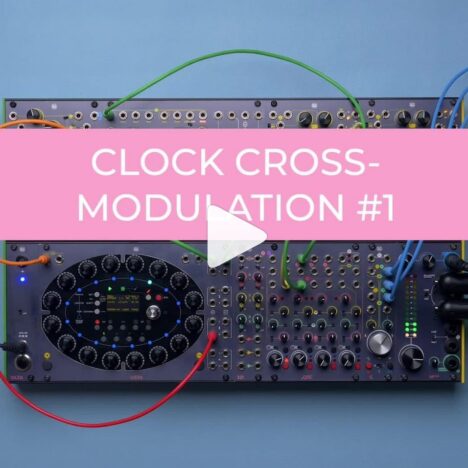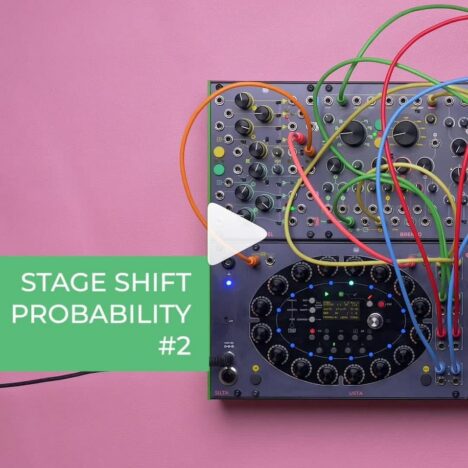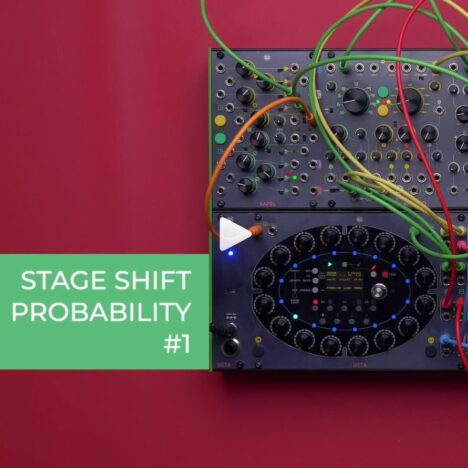- EURORACK
- CUNSA – Sound Seasoning
- CGM – Creative Mixer Series
- BRENSO – Entangled Sound Sources
- USTA – The Voltage Score
- FALISTRI – Movement Manager
- SAPÈL – Tamed Random Source
- FUMANA – Dual 16 Bands Spectral Editor
- 321 – Scale + Flip + Shift + Combine
- 333 – ProAudio Sum & Distribution
- SILTA 2016 – discontinued
- SEI – trunk lines – discontinued
- UNO – foldable case
- PLUS – modular modular case
- ACCESSORIES
- KNOBS
- 500 SERIES
- RESOURCES
- RESELLERS
- ABOUT
- ACCOUNT
Category / techniques
-
Falistri Fake Delay
Today we’ll use FALISTRI’s four-quadrant multiplier as a fake delay! By combining the two generators we can obtain a behavior similar to the repetition of a delay effect, slowly fading out. …2022-02-24 -
Clock Cross-Modulation #2
More messing around with USTA’s clock! Now CV B of track changes the clock tempo so that every stage has a different speed. It’s great for creating rubato and accelerando effects!
2022-01-20 -
Stage Shift Probability #3
We always showcased the stage shift function with a random S&H in sync with the current track. Now we play with different ratios: when the track is faster than the stage shift CV, USTA will play some sequence fragments before shifting again!
2022-01-20 -
Stage Shift & Gates
The Stage Shift function doesn’t shift just the CV, but also the CV values: pair it with some green LEDs to recall some ratchets!
2022-01-20 -
Clock Cross-Modulation #1
Today we want to mess around with that one thing you aren’t supposed to touch: THE CLOCK.
2022-01-20 -
Stage Shift Probability #2
The Stage Shift allows you to pick other stage values within the pattern – even from stages that you’re not playing! It can be nice to add a very controlled variation to your melody while still being able to get back to the original version.
2022-01-20 -
Stage Shift Probability #1
This time we want to use a pattern as a probability-based random sequence – and it’s possible through USTA’s Stage Shift parameter!
By routing an external random signal to USTA’s Stage Shift (like SAPÈL’s S&H out), we can randomly scramble our stages’ values. This means that the more a note is present in the sequence, the more likely it will be picked!2021-11-16 -
USTA Polyrhythm #2
Did you know you can get polyrhythms with USTA even if you don’t mess with Time Ratios?
You just have to set both your Gates tracks to the green color, and play with different ratcheting combinations.
For example, you can set Gate A to output three gates, and Gate B to output 2 gates during the same stage, thus getting a 3:4 polyrhythm.
The cool thing about this trick is that you can have a different polyrhythm for each stage!2021-11-16 -
-
USTA Polyrhythm #1
It is nice to see how much of a difference can a small number make.
In this patch, we had two tracks playing the exact same melody. What we did was just change the Clock Ratio of one track, to achieve a nice 3:2 polyrhythm.
There’s at least another way to get polyrhythms out of USTA, but we’ll see that in another video!2021-11-16
Categories
Recent Posts
- CUNSA v/s FUMANA: The same patch on two different filters!
- Subharmonic formant arpeggios patch breakdown: a classic Falistri patch!
- Memes aside, let’s make Sandstorm by Darude on our Frap Tools system
- Four tips to use CUNSA as a sound source (including ringing and additive synthesis)
- ‘Glass sounds‘ analog through-zero FM patch breakdown with Brenso and Cunsa!









